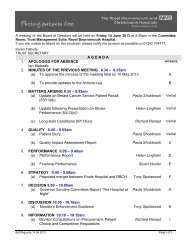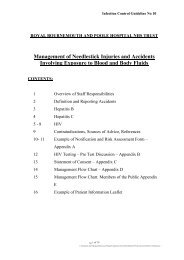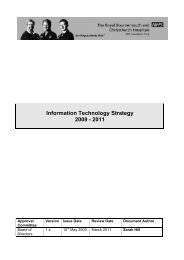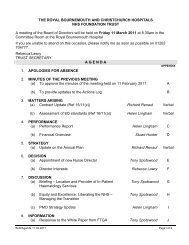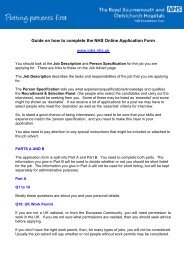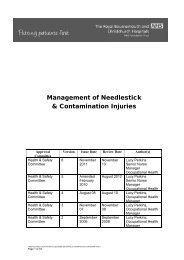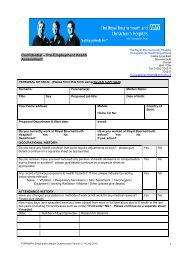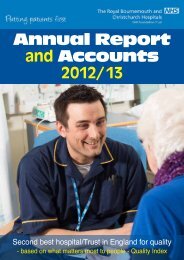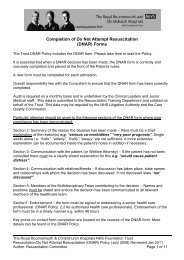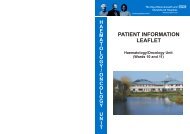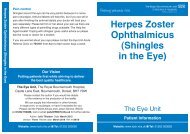View June's Board Pack - Royal Bournemouth Hospital
View June's Board Pack - Royal Bournemouth Hospital
View June's Board Pack - Royal Bournemouth Hospital
- No tags were found...
You also want an ePaper? Increase the reach of your titles
YUMPU automatically turns print PDFs into web optimized ePapers that Google loves.
40 The HRG error rate at the Trust is 10 per cent, a significant decreasefrom 24 per cent in 2009/10. This is a considerable improvement from2009/10 error rate in the accuracy of the coded data and the Trust shouldbe commended for this.41 The accuracy of coding diagnosis and procedures, the building blocksof HRG coding, has also improved over the period. The percentage ofinaccurately coded procedures and diagnosis was 9.9 per cent. This issignificantly better than in previous audits and demonstrates the time andeffort that has been invested in improving the quality of the coded data.42 The main reasons for the coding errors were:■ coders and clinicians not following the guidance from the March 2010Coding Clinic regarding coding of mandatory co-morbidities when theinformation was available at the time of coding;■ the use of a secondary procedure code for angiograms when anangioplasty is undertaken in Cardiology. These are coded due to clinicalstaff insisting these codes are added when an angiogram is done at thesame time as an angioplasty. This is against the coding rule whendiagnostic and therapeutic procedures are carried out on the same siteas the same theatre visit and only the therapeutic procedure should berecorded. This was the cause of all of the HRG changes withinCardiology;■ skin procedures are coded in two ways depending on the site of thebody that has been operated on. The coder had not reflected thedifferent site of procedures within the codes allocated and continued touse only codes from chapter ‘S’ when sometimes the correct codesshould be from other specific chapters. For example, skin operation onthe ear should be coded using a code from chapter ‘D’ with a code fromchapter ‘S’ to enhance this. All coders must have this rule re-enforced toensure these are coded correctly; and■ the specific type of image control used was not documented within thecasenotes and the EPR. The coding of Cardiology procedures could bemore specific if this information is available to the coder.Follow up area – General Medicine and Cardiology43 As a measure of progress, the audit revisited coding in GeneralMedicine. In General Medicine in 2009/10 there were 35 per cent of HRGschanging. This year, the HRG error rate was 7 per cent which is aconsiderable improvement on last year and the Trust should be commendedfor this.44 The audit also revisited coding in Cardiology. In Cardiology in 2007/08,3 per cent of HRGs were changing. This year the HRG error rate was 10 percent which is an improvement on the previous audit in 2007/08 however thiscould be improved further if the policy of recording angiograms wasremoved.Audit Commission Payment by results data assurance framework 11



